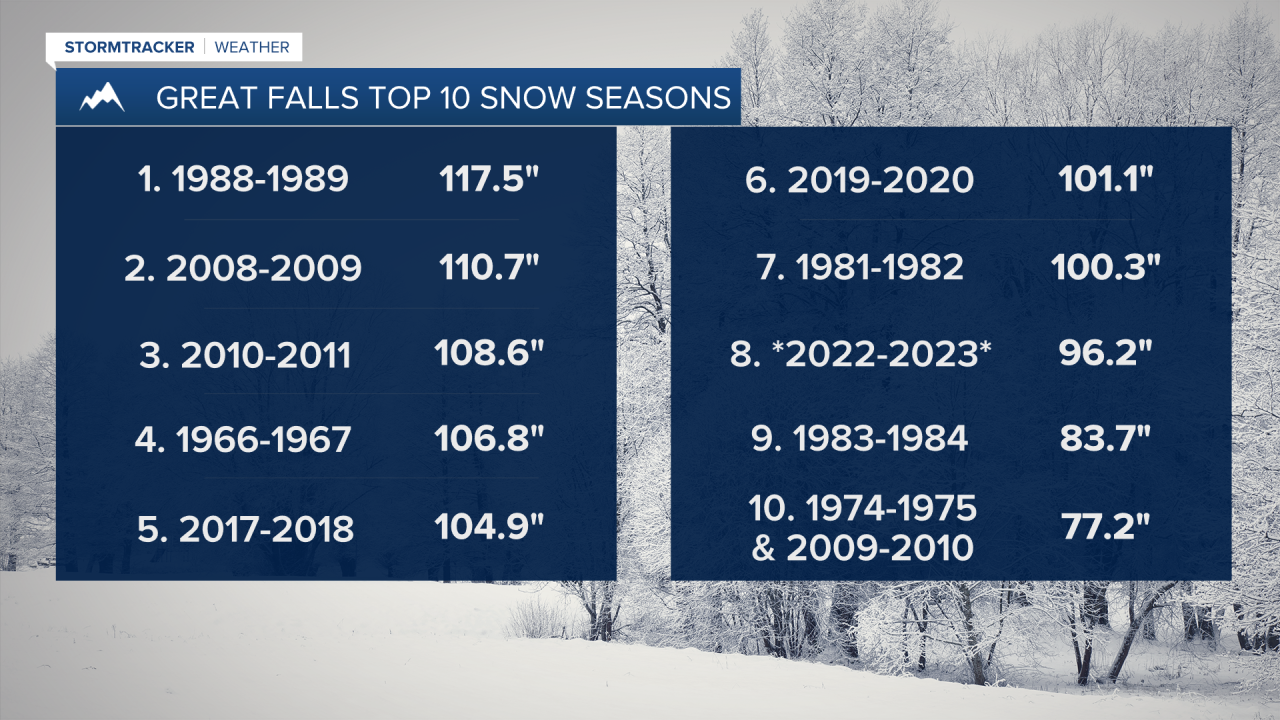Since the fall, we have been in a colder and wetter weather pattern, which has made this a really good snow season for many locations in Montana.
In December, Bozeman-MSU received 33.4 inches of snow, making it the snowiest month since December 2017 when 46.3 inches of snow fell.

Also, in December, Havre received 32.7 inches of snow, making it the second snowiest month on record, with April 1975 holding the distinction for the snowiest month when 32.8 inches of snow fell.

In April, Great Falls received 20.8 inches of snow, making it the snowiest month since October 2020 when 28 inches of snow fell.

With April's snow, Great Falls has now received 96.2 inches of snow since last fall, which makes this the 8th snowiest snow season on record.
A snow season is defined as July 1st of one year to June 30th of the next year.
The snowiest snow season on record in Great Falls was from 1988 to 1989 when 117.5 inches of snow fell. Also, a fun fact, 6 of the 11 snowiest snow seasons on record in Great Falls have occurred in the past 15 years.

Now Great Falls isn’t the only city to crack the top 10 this snow season as Havre has also had its 8th snowiest snow season on record with 65.9 inches of snow, and Glasgow has had its 3rd snowiest snow season on record with 64.9 inches of snow.
In Helena, at the airport, only 48.3 inches of snow has fallen this year, which barely cracks the top 30. There is a lot of missing data at the MSU station in Bozeman, but they have received at least 115.4 inches of snow this snow season, so it also has been a really good snow season there.

All the moisture that we have received since the fall has also allowed the drought situation to greatly improve throughout Montana. As of May 3rd, portions of western and northern Montana are still dealing with moderate drought, but a lot of southern and portions of central Montana, including Billings, Bozeman, Helena, and Great Falls, no longer have any drought classification.

**Please note that this drought map is not completely representative of the drought conditions throughout the entire state as there are localized areas, especially along and near the Hi-Line, that are still really dry and are likely dealing with at least severe drought conditions right now.**
A year ago at this time, a good chunk of Montana was dealing with extreme drought, so we are in a much better situation right now than we were last year at this time.

That being said, we still need to receive a lot more moisture for the rest of spring and the beginning of summer to make sure that the drought conditions don't get worse and to make sure that the fire danger remains low.





